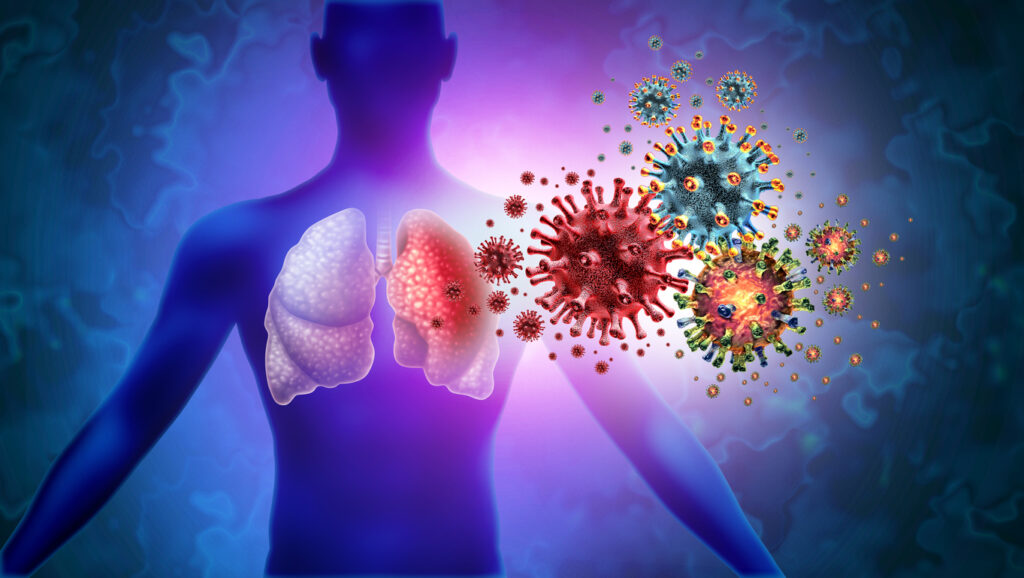Viral infections are caused by microscopic agents known as viruses, which invade living cells to replicate and cause disease. Unlike bacteria, viruses cannot survive or multiply outside a host organism, making them parasitic by nature. Viral infections range in severity from mild to life-threatening and can affect various systems in the human body, including the respiratory, gastrointestinal, neurological, and integumentary systems.

Common Types of Viral Infections
Viral infections can be classified based on the body system they affect or the nature of the virus itself. Below are major types of viral infections with notable examples:
Respiratory Viral Infections
- Influenza (Flu)
- Common Cold (Rhinovirus, Coronavirus)
- COVID-19 (SARS-CoV-2)
- Respiratory Syncytial Virus (RSV)
Gastrointestinal Viral Infections
- Norovirus
- Rotavirus
- Hepatitis A
Dermatological Viral Infections
- Herpes Simplex Virus (HSV-1, HSV-2)
- Varicella Zoster Virus (Chickenpox and Shingles)
- Measles and Rubella
Neurological Viral Infections
- Rabies
- Poliovirus
- Viral Meningitis
- West Nile Virus
Systemic and Chronic Viral Infections
- HIV/AIDS
- Hepatitis B and C
- Epstein-Barr Virus (EBV)
- Cytomegalovirus (CMV)
How Viruses Spread: Transmission Mechanisms
Transmission of viral infections occurs through several routes. Understanding these mechanisms is critical for implementing effective control measures.
Primary Transmission Routes:
- Airborne: Sneezing, coughing (e.g., flu, COVID-19)
- Direct Contact: Touch, kissing (e.g., herpes)
- Fomites: Infected objects/surfaces (e.g., rotavirus)
- Vector-Borne: Mosquito bites (e.g., Zika, dengue)
- Bodily Fluids: Blood, saliva, sexual fluids (e.g., HIV, hepatitis B)
Signs and Symptoms of Viral Infections
Symptoms vary depending on the virus and the body system it targets. However, general indicators of viral infections include:
- Fever and chills
- Fatigue and body aches
- Cough, sore throat, nasal congestion
- Vomiting or diarrhea
- Skin rashes or blisters
- Neurological signs (e.g., confusion, seizures in severe cases)
When to Seek Medical Attention:
- Persistent high fever
- Difficulty breathing
- Severe headache or neck stiffness
- Altered consciousness
- Uncontrolled vomiting or diarrhea
Diagnosis: Identifying a Viral Infection
Accurate diagnosis involves clinical examination supported by laboratory testing. Key diagnostic methods include:
- Polymerase Chain Reaction (PCR): Detects viral genetic material
- Antigen Testing: Identifies viral proteins
- Serological Testing: Measures antibody response
- Viral Culture: Grows virus in a lab (less commonly used today)
Timely diagnosis is critical for both treatment and prevention of further transmission.
Treatment Options for Viral Infections
Unlike bacterial infections, viral infections do not respond to antibiotics. Treatment strategies typically focus on:
1. Supportive Care
- Rest and hydration
- Fever and pain management (paracetamol, ibuprofen)
- Nutritional support
2. Antiviral Medications
- Oseltamivir (for influenza)
- Acyclovir (for herpes)
- Antiretrovirals (for HIV)
- Direct-acting antivirals (for hepatitis C)
3. Immunotherapy and Monoclonal Antibodies
- Used for severe or chronic infections (e.g., COVID-19, RSV)
Prevention of Viral Infections: Key Strategies
1. Vaccination
Vaccines are the most effective preventive tool against many viral infections, including:
- Measles, mumps, rubella (MMR)
- Hepatitis A and B
- Influenza
- HPV
- COVID-19
2. Hygiene and Sanitation
- Frequent handwashing with soap
- Use of alcohol-based hand sanitizers
- Avoiding face-touching and close contact with infected individuals
3. Safe Practices
- Protected sex to avoid HIV and hepatitis
- Safe food and water consumption
- Use of insect repellents in vector-prone regions
4. Public Health Interventions
- Quarantine and isolation protocols
- Contact tracing
- Mass immunization campaigns during outbreaks
Immune System Response to Viral Infections
Upon viral entry, the body activates an immune response through:
- Innate Immunity: Immediate, non-specific response
- Adaptive Immunity: Involves B and T lymphocytes; builds long-term memory
In some cases, the immune system overreacts, leading to complications like cytokine storms, which can damage tissues and organs.
Global Impact of Viral Infections
Viral infections remain a major public health concern, contributing to global morbidity and mortality. Key statistics include:
- HIV/AIDS: 39 million people living with HIV globally
- Influenza: 290,000–650,000 deaths annually
- COVID-19: Over 6 million confirmed deaths worldwide (as of 2024)
International efforts such as the WHO’s Global Influenza Surveillance and Response System (GISRS) and COVAX for COVID-19 vaccines are critical to managing viral threats.
A Unified Approach to Combating Viral Infections
Combating viral infections demands an integrated approach involving vaccination, hygiene, early diagnosis, effective treatment, and global cooperation. As new viruses continue to emerge and evolve, investment in public health infrastructure, research, and education remains vital.

